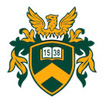Novák Ádám (szerk.): Fontes Memoriae Hungariae III. Varsóban őrzött magyar vonatkozású oklevelek, 1439–1489. Közreadja: Novák Ádám, Tóth Orsolya és Tóth Péter (Debrecen, 2019)
Sobiesław Szybkowski: Polish-Hungarian Relations between 1437 and 1490. A Short Introduction
XV The death of Vladislaus III at Varna put an end to the Polish-Hungarian personal union. In the Kingdom of Poland, Casimir Jagiellon was the natural successor of his older brother. However, political clashes over his Polish coronation continued for almost two and a half years and he was only crowned in Cracow in June 1447. Casimir had also been Grand Duke of Lithuania (since 1440) and when he became King of Poland, the personal union with Lithuania was renewed.48 The Hungarian lords, on the other hand, accepted the succes sion of Ladislaus the Posthumous. However, he was staying in Austria under the guardianship of Frederick III. Therefore, the country was actually governed by Hungarian lords. John Hunyadi had the strongest position and served as Governor of the Kingdom of Hungary between 1446 and 1453. Ladislaus the Posthumous was not freed from Frederick’s “care” until 1453, when he officially took over both Bohemia and Hungary. However, John Hunyadi had powerful influence on the Hungarian political life until his death in 1456, whereas after 1451 Bohemia was ruled by a regent, George of Poděbrad, the leader of a group of moderate Hussites. 49 Immediately after 1444 both Poland and Hungary were preoccupied with their internal affairs. After 1447 Casimir Jagiellon concentrated on strengthening his power in Poland and on the conflict with a pretender to the throne of Lithuania, prince Michael Žygimantaitis (the son of Sigismund Kęstutaitis). 50 Still, he did not forget about dynastic matters. In 1452 he began to court Elizabeth of Austria, the daughter of Albert of Austria and Elisabeth of Luxemburg, the older sister of Ladislaus the Posthumous. A year later their marriage was approved by Emperor Frederick III (Elisabeth’s guardian), her brother, Ladislaus 48 Kurtyka, 1997. 330–335.; Łowmiański, Henryk: Polityka Jagiellonów . Poznań, 1999. 215–221.; Zawitkowska, 2005. 209–219.; Błaszczyk, 2007. 794–811.; Latocha, 2015. 99–108.; Sochacka, 2016. 171–176. 49 Biskup, Marian: Trzynastoletnia wojna z zakonem krzyżackim 1454–1466 . Warszawa, 1967. 83–86.; Idem: 1447–1466: lata konfliktów zbrojnych. In: Historia dyplomacji polskiej. (further: Bi skup, 1982B). 434. (the same text: Biskup, Marian: Dyplomacja polska czasów Kazimierza Jagiellończyka, cz. 1: W kręgu wielkiego konfliktu zbrojnego z zakonem krzyżackim (1447–1466). In: Kazimierz Jagiellończyk. Zbiór studiów o Polsce drugiej połowy XV wieku. Ed. Biskup, Marian, Gór ski, Karol. Warszawa, 1987. [futher: Kazimierz Jagiellończyk ] 173–229.); Engel, Pál: The Realm of St Stephen. A History of Medieval Hungary 895–1526. London–New York, 2001. 288–296.; Kalous, Antonín: Matyáš Korvín. Uherský a český král . České Budějovice, 2009. 36–40. About George of Poděbrad see: Heymann, Frederick G.: George of Bohemia. King of Heretics . Princeton, 1965. 50 Górski, Karol: Młodość Kazimierza i rządy na Litwie . In: Kazimierz Jagiellończyk . 9–17. 14–17.; Idem: Rządy wewnętrzne Kazimierza Jagiellończyka w Koronie. In: Kazimierz Jagiellończyk . 82– 127. 84–94.; Kurtyka, 1997. 339–350.; Zawitkowska, 2005. 221–235.; Błaszczyk, 2007. 792–794., 812–849.; Latocha, 2015. 139–149.; Sochacka, 2016. 179–196.; S. Polechow: Książę Michał Zygmuntowicz – walka o spadek po ojcu. In: Ojcowie i synowie. O tron, władzę, dziedzictwo . Ed. Możejko, Beata, Paner, Anna. Gdańsk, 2018. 199–243.
